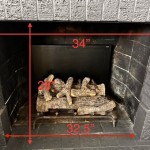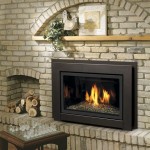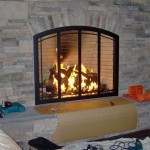Stone Veneer for Fireplace Over Brick: A Comprehensive Guide
Updating a fireplace is a common home improvement project, often undertaken to enhance the aesthetic appeal of a living space. One popular method involves applying stone veneer over an existing brick fireplace. This approach offers a cost-effective and relatively straightforward way to achieve the look of a natural stone fireplace without the expense and complexity of a full stone installation. This article will delve into the considerations, processes, and advantages of using stone veneer over brick for a fireplace.
Before embarking on such a project, it's crucial to understand the nature of stone veneer. Stone veneer is a lightweight material, typically manufactured from concrete or natural stone, designed to mimic the appearance of full-thickness stone. It is significantly thinner and lighter than natural stone, making it suitable for application over existing surfaces like brick. Stone veneer is available in a wide array of colors, textures, and patterns, allowing homeowners to select a style that complements their interior design.
The existing brick fireplace provides a solid substrate for the stone veneer. However, proper preparation is paramount to ensure a successful and durable installation. Neglecting the preparation phase can result in adhesion failures and a compromised aesthetic. Therefore, a thorough assessment of the brickwork is the first critical step.
Assessing the Brick Fireplace
A careful inspection of the brick fireplace is essential to determine its suitability for a stone veneer application. The assessment should focus on the structural integrity of the brick, the condition of the mortar joints, and the presence of any surface contaminants. Any deficiencies identified during this assessment must be addressed before proceeding with the veneer installation.
Loose or crumbling bricks must be repaired or replaced. Deteriorated mortar joints should be re-pointed. Re-pointing involves removing the loose or damaged mortar and replacing it with fresh mortar. This process ensures a stable and level surface for the stone veneer. If the brick surface is uneven, a leveling compound may be required to create a smooth substrate.
Cleaning the brick surface is crucial to remove any dirt, grime, soot, or efflorescence. These contaminants can interfere with the adhesion of the mortar used to secure the stone veneer. A wire brush and a solution of trisodium phosphate (TSP) can be used to thoroughly clean the brick. It's important to rinse the surface thoroughly with clean water and allow it to dry completely before applying the veneer.
In some instances, the brick may be painted or sealed. These coatings can also hinder proper adhesion. The paint or sealant must be removed using a chemical stripper or mechanical abrasion. The goal is to expose the bare brick surface to allow for optimal bonding with the mortar.
Once the brick has been thoroughly assessed, repaired, and cleaned, a scratch coat of mortar is typically applied. This scratch coat provides a textured surface that enhances the bond between the brick and the stone veneer. The scratch coat should be allowed to cure for the recommended time before proceeding with the veneer installation.
Selecting the Right Stone Veneer and Mortar
Choosing the appropriate stone veneer and mortar is crucial for both the aesthetic appeal and the longevity of the fireplace. The selection process should consider the style of the home, the desired look of the fireplace, and the specific requirements of the installation.
Stone veneer is available in a wide range of styles, including ledgestone, fieldstone, and stacked stone. Each style offers a unique aesthetic, and the choice depends on personal preference and the overall design of the room. It's advisable to obtain samples of different veneer styles and lay them out against the existing brick to visualize the final appearance.
The color and texture of the stone veneer should complement the surrounding décor. Consider the color of the walls, the flooring, and the furniture when making your selection. A cohesive color scheme will create a more harmonious and visually pleasing result.
The type of mortar used to adhere the stone veneer is also critical. A high-quality mortar specifically designed for stone veneer applications should be used. These mortars typically contain polymers that improve adhesion, flexibility, and water resistance. The mortar should be mixed according to the manufacturer's instructions and applied evenly to the back of each stone veneer piece.
It's important to note that some stone veneers may require a specific type of mortar. Consult with the veneer manufacturer or a knowledgeable supplier to ensure that you are using the correct mortar for your chosen veneer. Using the wrong mortar can compromise the bond and lead to premature failure.
Furthermore, consider the climate in which you live. If you reside in an area with freeze-thaw cycles, it's important to choose a mortar that is resistant to these conditions. Freeze-thaw cycles can cause the mortar to expand and contract, leading to cracking and delamination of the stone veneer.
The Installation Process: Applying Stone Veneer Over Brick
The installation of stone veneer over brick requires careful attention to detail and adherence to best practices. A systematic approach will ensure a professional and long-lasting result. The process begins with preparing the work area and gathering the necessary tools and materials.
Protect the surrounding area with drop cloths or plastic sheeting to prevent mortar splatters and dust from damaging the flooring or furniture. Gather all the tools and materials, including the stone veneer, mortar, mixing bucket, mortar trowel, grout bag, sponge, level, hammer, and chisel. Ensure that you have adequate lighting and ventilation in the work area.
Begin by mixing the mortar according to the manufacturer's instructions. The mortar should have a consistency similar to peanut butter. Avoid adding too much water, as this can weaken the mortar and compromise its adhesion. Use a mortar mixer or a drill with a mixing attachment to ensure a thorough and consistent mix.
Apply a layer of mortar to the back of each stone veneer piece, using a mortar trowel. The mortar layer should be thick enough to create a strong bond with the brick surface but not so thick that it oozes out from the sides of the veneer. Press each stone veneer piece firmly against the brick surface, ensuring that it is level and aligned with the surrounding pieces. Use a level to check the alignment of each piece and make any necessary adjustments.
Maintain consistent joint spacing between the stone veneer pieces. This can be achieved by using spacers or by visually aligning the pieces. The joint spacing will depend on the style of the stone veneer and the desired aesthetic. As you install the veneer, periodically step back and assess the overall appearance. Make any necessary adjustments to ensure a balanced and visually appealing result. Cut stone veneer pieces as needed to fit around corners, edges, or other obstructions. Use a hammer and chisel or a wet saw to cut the veneer. Wear safety glasses to protect your eyes from flying debris.
Once the stone veneer has been installed, allow the mortar to cure for the recommended time. This typically takes 24 to 48 hours, depending on the ambient temperature and humidity. Avoid disturbing the veneer during the curing process. After the mortar has cured, apply grout to the joints between the stone veneer pieces. Use a grout bag to apply the grout evenly and consistently. Wipe away any excess grout with a damp sponge. The type of grout and its color should complement the stone veneer. Allow the grout to cure for the recommended time. Clean the stone veneer surface with a clean, damp sponge to remove any residual grout haze. Inspect the installation for any imperfections or gaps. Fill any gaps with additional grout or mortar. Apply a sealant to the stone veneer to protect it from moisture and staining. Choose a sealant that is specifically designed for stone veneer applications. Follow the manufacturer's instructions for applying the sealant.
By following these steps and paying attention to detail, you can successfully install stone veneer over brick and transform the look of your fireplace. However, if you are not comfortable performing this type of work, it is advisable to hire a qualified professional.

Installing Stone Veneer Over A Brick Fireplace Grand River

Pin By Tarra Wills Efkarpidis On For The Home Brick Fireplace Remodel Stone

Stone Veneer Over A Brick Fireplace Updates The Look

Stone Veneer Over A Brick Fireplace Updates The Look

Diy Stacked Stone Fireplaces On A Budget Msi Blog
.png?strip=all)
How To Transform Your Fireplace With Thin Stone Veneer

Can You Put Stone Veneer Over Brick

Stone Veneer Over A Brick Fireplace Updates The Look

Natural Stacked Stone Veneer Fireplace Ideas

Installing Stone Veneer Over A Brick Fireplace Grand River
Related Posts








